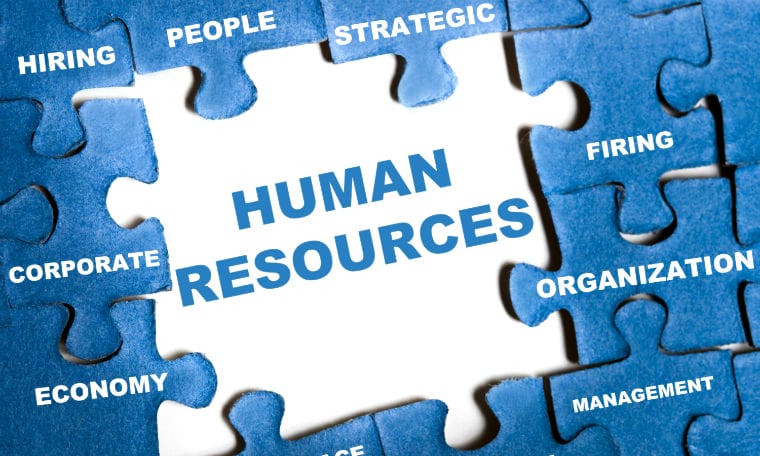HR Administration
Evolution of the HR Executive: From Personnel to Organizational Secret Weapon
By Wanda Gravett
Apr. 7, 2017
We hear a great deal about how the function of human resources has evolved over the years, but this might never have occurred without today’s HR executive, who has driven this change through their own business savvy and knowledge.
In the role of director, we saw the HR leader function primarily as a personnel management facilitator. But as organizations grew and globalized in exceptionally challenging business environments, so did the need for HR in a different capacity. HR was drawn further and deeper into organizational decision-making and planning, addressing a much-needed void.
The shift in role from director to executive evolved as a direct response and is due largely to HR’s unique combination of experience, exposure to the inner sanctum of upper-level executives and organizational issues, and unmatchable knowledge that has been valued and expanded upon in recent years. Human resource executives are often considered the right arm of an organization because they make things happen that no other single department can.
Today, human resource executives:
- Build knowledge to ensure an organization’s growth, strong leadership, and sustainability in highly competitive environments.
- Ensure longevity of an organization through thoughtful succession planning that protects key intellectual capital and key positions, as well as the larger organization.
- Oversee smart and ongoing regulatory compliance.
- Participate in planned mergers and acquisitions by determining knowledge valuation and human capital assets to justify proceeding, then work to effectively merge the different cultures.
It would be challenging to identify any other department or division executive who does all these things as part of their regular agenda. But this is the reality of the HR executive today.
Yesteryear’s HR Picture
Many of us reported to HR on our first day of work, perhaps in a trailer behind the building that housed the business functions and corporate offices — an afterthought location for the personnel-only functions. That was during a time when the broad and diverse talent potential of the HR executive — then an unknown commodity — was unnoticed and untapped. It is where the HR executive began, with a hand to the dynamic line of employees and an eye to the organization and its future, then evolved into a key force for the C-suite to fuel and turn loose. Not unlike the famous scientific illustration of evolution that began with the caveman and fluidly grew into the perfectly upright human, the HR executive of today has truly transformed.
Today’s Head-of-the-Line Picture
Today’s organizations need every manager and leader, particularly those in HR, to see the organization through a systems view that is connected to the global environment. However, they must also have an eye for detail, in order to optimize the talent and knowledge needed to achieve full organizational capacity in every part of the world where the company operates. This must all be achieved while maintaining full compliance within a profoundly diverse set of country-specific mandates. If the HR executive is not one of these fully evolved leaders, that organization loses in the race for savvy and smart employees and the operating edge in very aggressive markets.
Human resources is in the unique position of touching every single employee at every level, connecting with every major organizational initiative, and teaming with the legal team to protect both the employees and the organization.
Emotional Intelligence
The HR executive has become one of the strongest executive team members in guiding organizations through global waters, mergers and acquisitions, and even market expansions, because without their unique knowledge and experience, critical elements could be missed. This makes sense in a practice field whose origin was singularly people-focused. That personnel-focused beginning, while limiting, when blended with emotional intelligence and a global view, allows organizations to understand what inspires, drives and motivates people, providing a strong basis for HR’s leadership role in the multinational and multigenerational global workplace.
Emotional intelligence is what has differentiated the HR executive from others because it requires an almost inherent ability to relate well to those around you, to separate oneself from one’s ego and the omnipresent larger and strategic organizational view. Author Daniel Goleman reflected the heart of this in his book, “Working with Emotional Intelligence”: “The rules for work are changing. We’re being judged by a new yardstick: not just by how smart we are, or by our training and expertise, but also by how well we handle ourselves and each other.”
The Effective Executive
Utilizing emotional intelligence to understand how people tick and what inspires or motivates them, while at the same time keeping a long-term global view, turns out to be a perfect blend for executive leaders — attributes that are not easily found.
The evolution of the HR executive has created a highly desirable mix of knowledge, capability and wisdom, so essential in a world where leadership and leaders’ decisions are less confident and less predictable than ever in history. Human resource executives have grown into their new role with a substantial foundation of experience, while many other roles within companies are trying to catch on or up. This slow but steady evolution from a sole focus on personnel to a solid executive, C-suite team player, and a neutral advocate with an executive global view, is here to stay.
Wanda Gravett is a core faculty member for Walden University’s master’s in human resource management program. Before joining academia, Gravett was a corporate HR executive, serving as the organizational change leader with the Sisters of Charity Healthcare System, Houston corporate headquarters. She also served as CEO and board chair for the Seattle/L.A.-based Omicron Group, designing and improving the HR audit process.
Schedule, engage, and pay your staff in one system with Workforce.com.
